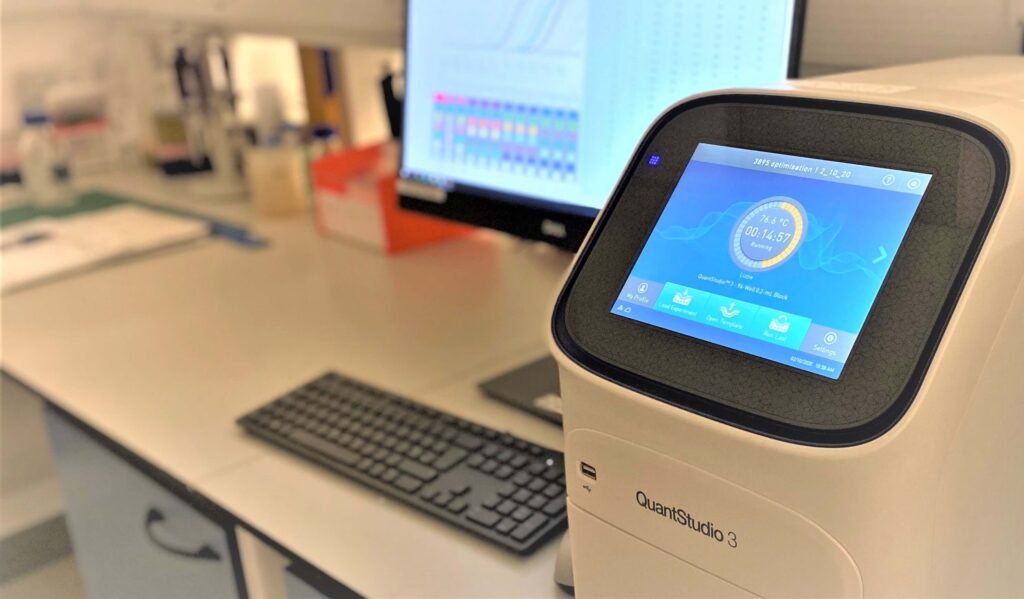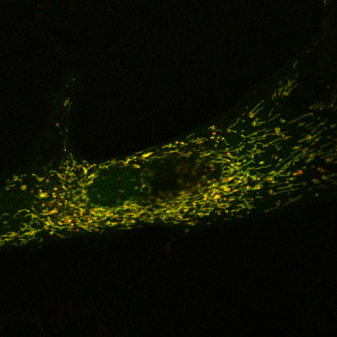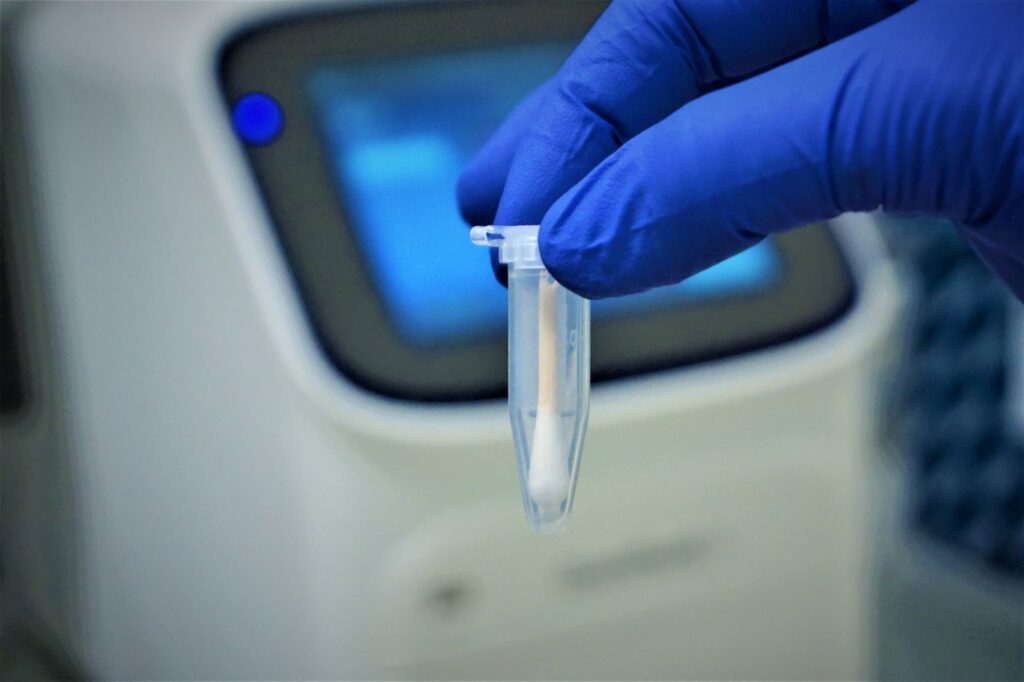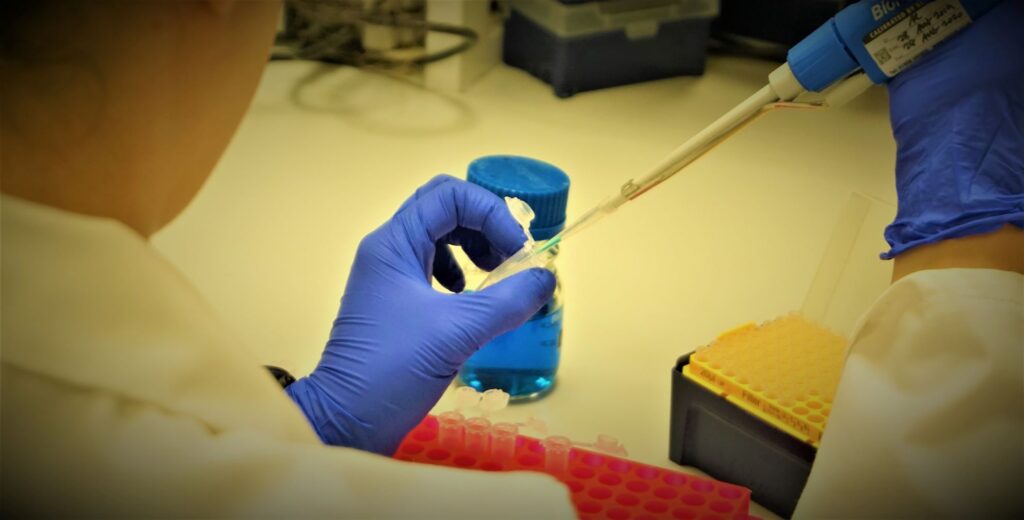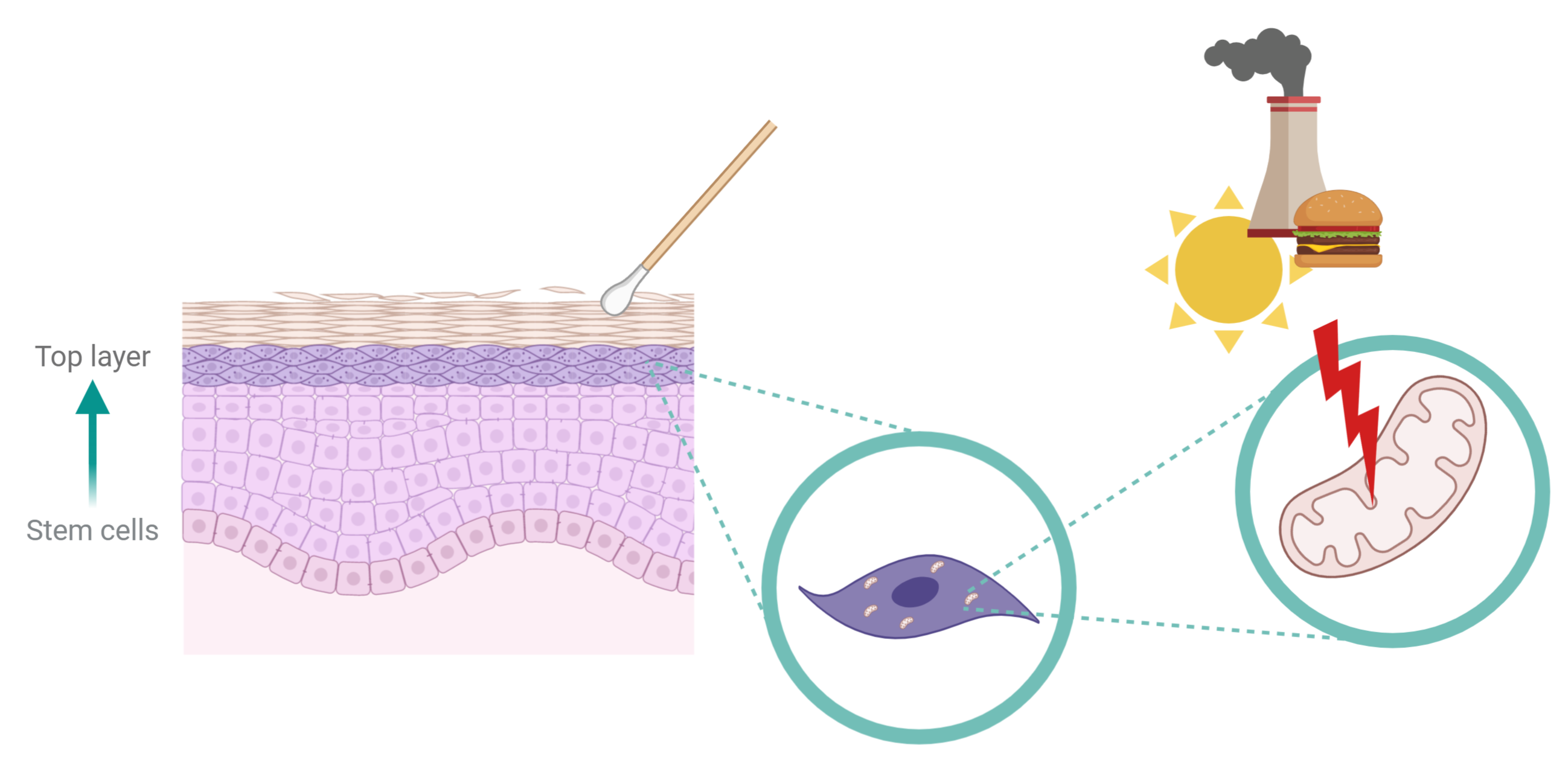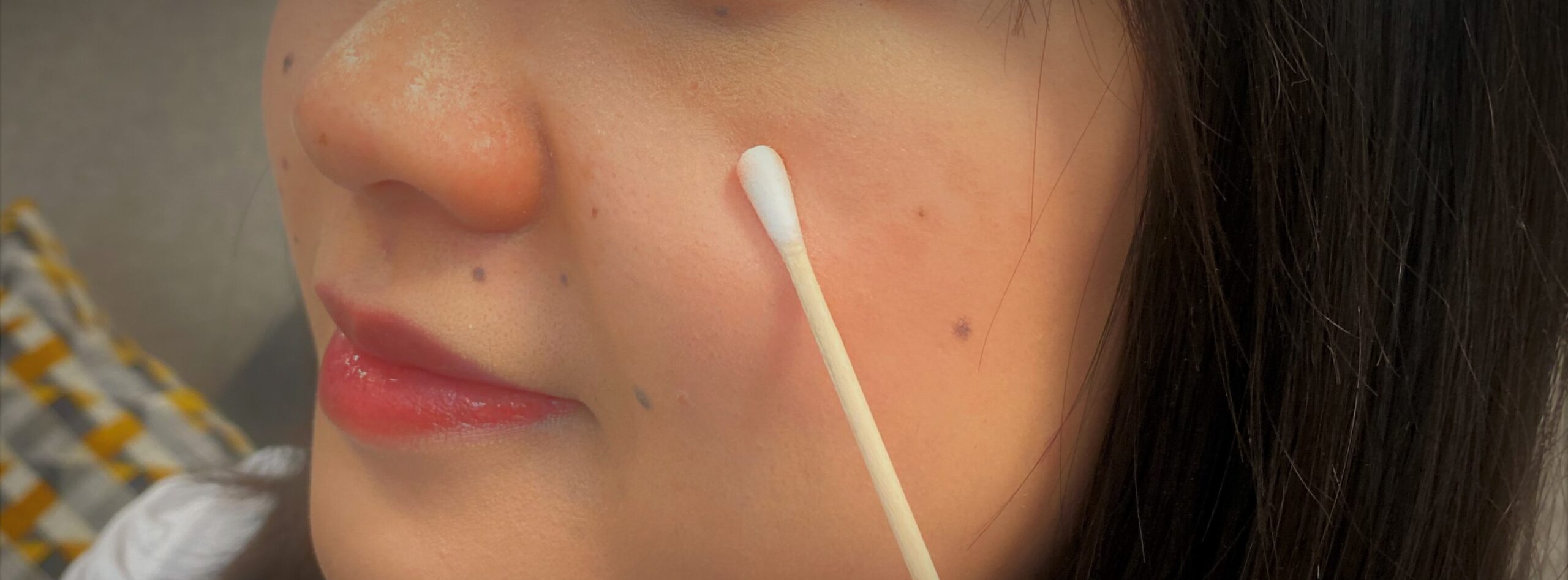The Science Behind Our Technology
Mitochondria
Mitochondria are the batteries of our cells. They have their own DNA which creates many of the tools needed for their function and as our skin ages, mitochondria become inefficient and show an increase in DNA damage. Eventually, this downward trend leads to skin ageing, featuring tired or fatigued skin as the performance of the batteries begins to decline.
‘Intrinsic or chronological ageing’ is the inevitable reduction in cell function and is primarily influenced by genetics. Other factors include our hormones and the body site of the skin. Chronological ageing of the skin is accelerated greatly by external factors such as the harmful rays in sunlight and also environmental pollution as well as internal factors such as diet, sleep and lifestyle. In combination, they give rise to the typical features of skin ageing including fine lines, deeper wrinkles, uneven skin tone, increased redness of visible veins, and reduced elasticity of skin.
Skin DNA damage
Skin cells can become stressed by both our environment and lifestyle. This stress results in the production of reactive oxygen species in the mitochondria, which signals the cell to repair damage. The stress cascade beginning in mitochondria can account for up to 90% of the cell’s overall stress.
Reactive oxygen species interact with DNA, proteins and fats using targeted structural changes to aid cell signalling. Conversely, too many reactive oxygen species can cause excessive structural changes and lead to damage. These stressors essentially cause the mitochondrial batteries in our skin to run down. This ultimately decreases skin bioenergy and causes tired skin and this is how our lifestyle and environment can lead to skin DNA damage and accelerate skin ageing. By monitoring and looking after our mitochondria, we can take steps to keep our batteries topped up and increase bioenergy for younger-looking skin.
Our Skin
Our skin is made up of two layers: a dermal layer underneath an epidermal layer. As shown above in the image, skin cells in the epidermal layer form from the stem cells at the bottom of the epidermis. These cells take around one month to reach the surface of the skin, where they are then shed, and this describes the process of cell turnover in the epidermis. Mitochondria have a limited ability to repair the DNA damage they receive from stress, consequently, the samples taken from the top layer of skin can track damage accumulated over the previous month.



